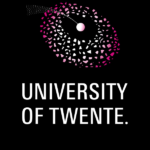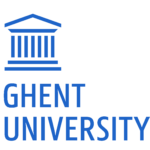I am Danny Vanpoucke, an assistant professor in computational materials research at Hasselt University. My work mainly focuses on materials science at the atomic scale. Within my research group QuATOMs (Quantum and Artificial inTelligence design Of Materials), part of materials chemistry, we aim to accelerate quantum chemical calculations through machine learning based on small data sets.
As a computational scientist, I am a theoretician at heart, but I also wish to understand experiments and make predictions about nature. For this reason, all the projects I work(ed) on are in collaboration with experimental scientists.
 From 2005 to 2009, I worked at the Computational Materials Science group of Prof. Paul Kelly at the the University of Twente (the Netherlands). I obtained my PhD in Physics, in September 2009, at the Faculty of Science and Technology and the MESA+ Institute for Nanotechnology at the same university. In my dissertation, I developed a program, called HIVE, for simulating Scanning Tunneling Microscopy (STM) images. The method was successfully applied to study platinum (Pt) induced nanowires on a germanium (Ge) surface. Whereas STM has no chemical sensitivity, by comparing simulated images with the experimental data, the chemical elements in the structure can be identified.
From 2005 to 2009, I worked at the Computational Materials Science group of Prof. Paul Kelly at the the University of Twente (the Netherlands). I obtained my PhD in Physics, in September 2009, at the Faculty of Science and Technology and the MESA+ Institute for Nanotechnology at the same university. In my dissertation, I developed a program, called HIVE, for simulating Scanning Tunneling Microscopy (STM) images. The method was successfully applied to study platinum (Pt) induced nanowires on a germanium (Ge) surface. Whereas STM has no chemical sensitivity, by comparing simulated images with the experimental data, the chemical elements in the structure can be identified.
 From the end of 2009 until the end of 2012, I was a member of the solid state chemistry group (SCRiPTS) of Prof. Isabel Van Driessche in the Department of Inorganic and Physical Chemistry of Ghent University (Belgium). In this project, my research focused on cerium (Ce) oxides, as buffer layers for coated superconductors, which I studied using ab initio calculations. During this project I came into contact with the chemical concept of “atoms-in-molecules” via Prof. Patrick Bultinck (Quantum chemistry group). This entire body of work lead to a second PhD, this time in chemistry.
From the end of 2009 until the end of 2012, I was a member of the solid state chemistry group (SCRiPTS) of Prof. Isabel Van Driessche in the Department of Inorganic and Physical Chemistry of Ghent University (Belgium). In this project, my research focused on cerium (Ce) oxides, as buffer layers for coated superconductors, which I studied using ab initio calculations. During this project I came into contact with the chemical concept of “atoms-in-molecules” via Prof. Patrick Bultinck (Quantum chemistry group). This entire body of work lead to a second PhD, this time in chemistry.
 In January 2013, I started working with Prof. Veronique Van Speybroeck, at the center for molecular modeling (CMM), and since October 2014, I was granted a postdoctoral fellowship by the Research Foundation – Flanders (FWO) to work on Metal-Organic Frameworks (MOFs). These very porous materials (>50% of the material is empty space) have a huge internal surface-area. This places them at the conceptual boundary between solids and surfaces. In addition, their compound
In January 2013, I started working with Prof. Veronique Van Speybroeck, at the center for molecular modeling (CMM), and since October 2014, I was granted a postdoctoral fellowship by the Research Foundation – Flanders (FWO) to work on Metal-Organic Frameworks (MOFs). These very porous materials (>50% of the material is empty space) have a huge internal surface-area. This places them at the conceptual boundary between solids and surfaces. In addition, their compound  nature (inorganic nodes bound via organic linkers) makes them highly tunable and places them at the interface between solid-state physics and quantum chemistry. However, their beauty from the fundamental point of view is equaled by the computational expense and difficulty of performing high quality and high accuracy calculations on these systems. Since the first of March 2016, I have moved with my project to the University of Hasselt, where my computational work also expands into the realm of doped diamond.
nature (inorganic nodes bound via organic linkers) makes them highly tunable and places them at the interface between solid-state physics and quantum chemistry. However, their beauty from the fundamental point of view is equaled by the computational expense and difficulty of performing high quality and high accuracy calculations on these systems. Since the first of March 2016, I have moved with my project to the University of Hasselt, where my computational work also expands into the realm of doped diamond.
 From July 2019 until December 2020, I worked at the University of Maastricht on a collaborative project between the Aachen-Maastricht Institute for Biobased Materials (AMIBM) and the Department of Data Science and Knowledge Engineering (DKE). In this project, I developed a machine-learning framework for small data sets, which was applied on several experimental data sets. The resulting publications were selected as featured publication for a special issue on machine learning in materials research, and the cover publication of a Polymer international issue in 2022. This project allowed me grow as a computational materials researcher in the fast growing branch of machine learning and artificial intelligence focused on materials research and materials design.
From July 2019 until December 2020, I worked at the University of Maastricht on a collaborative project between the Aachen-Maastricht Institute for Biobased Materials (AMIBM) and the Department of Data Science and Knowledge Engineering (DKE). In this project, I developed a machine-learning framework for small data sets, which was applied on several experimental data sets. The resulting publications were selected as featured publication for a special issue on machine learning in materials research, and the cover publication of a Polymer international issue in 2022. This project allowed me grow as a computational materials researcher in the fast growing branch of machine learning and artificial intelligence focused on materials research and materials design.
Since mid 2020, I was also involved in the development of the new masters program “materiomics” at Hasselt University. In this program, we train students of physics and chemistry to become interdisciplinary materials researchers with a broad basic knowledge of materials research, and specialization in one of 4 topics: Materials for (1) Energy, (2) Health, (3) Circularity or (4) Quantum-technology. Within this program, my contribution focuses on the computational modelling part of materials, teaching all our students the very basics of first principles modeling, machine learning and much more. The program officially started in September 2022, with our first eight master students. I hope to enthuse them about the possibilities of computational materials modelling and design.
Having both a PhD in Physics and Chemistry, and as a computational scientist working at the interface between theory and experiment, life feels a bit like that of a delocalized particle: everywhere at once. This website is dedicated to my work, and contains a blog where you can find my ideas on this work and the life of a delocalized physicist, even if he is part of the department of chemistry.
I hope you enjoy browsing these pages,
Danny Vanpoucke.

